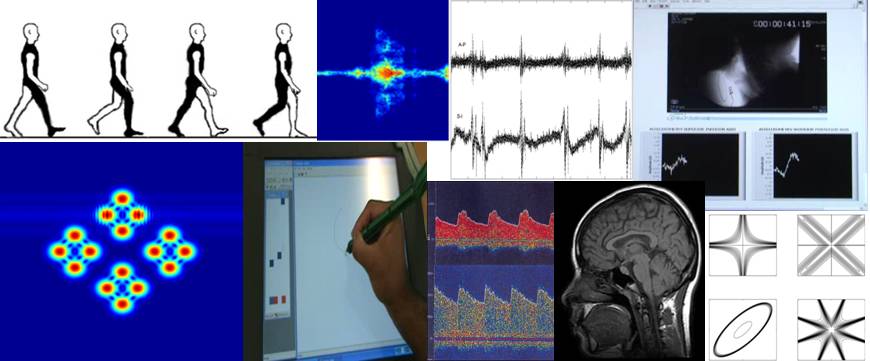Gait analysis
Walking is the most common physical activity among adults. Walking is a complicated task governed by the hierarchical control of the motor cortex, spinal pattern generators and feedback from the vestibular system. Aging and diseases can effect our gait and it is important to investigate these effects. For example, falls are a major cause of morbidity and mortality in older adults. For the elderly population, up to 70% of these falls occur during walking, often leading to hip fractures and subsequent hospitalization. It is therefore important to screen for high-risk individuals so that interventions can be put in place to prevent falls. One method of gauging fall risk is to quantify the ability to maintain balance during locomotion.
One of the fundamental temporal characteristics of walking is the stride interval, that is, the time between successive heel strikes. Due to these varying levels of conscious and autonomic control, interstride times fluctuate in a very complex manner. Investigation of stride interval persistence among different populations has revealed diminished correlation with advanced aging and in the presence of certain neuromuscular pathologies. Within a cohort of individuals with higher-level gait disorder, these dynamics provided the only distinguishing feature among fallers and non-fallers. Furthermore, when walking is paced to a metronome, stride interval dynamics demonstrate anti-persistent fluctuations as opposed to the persistent behaviour typical of regular overground walking. Given that stride dynamics have shown these sensitivities to locomotor maturity, disfunction and constraint, quantification of stride interval persistence seemingly provides important insight into the central mechanisms driving human locomotor control.
The maximum Lyapunov exponent quantifies local dynamic stability — the sensitivity of the system to infinitesimal perturbations. Since this method entails measuring the divergence of movement trajectories at multiple instances in time, it provides a more encompassing analysis of the temporal fluctuations in the locomotor system’s stability than traditional measures.
Thus, in our research, we use these various methods to quantify the environmental effect on our gait.



